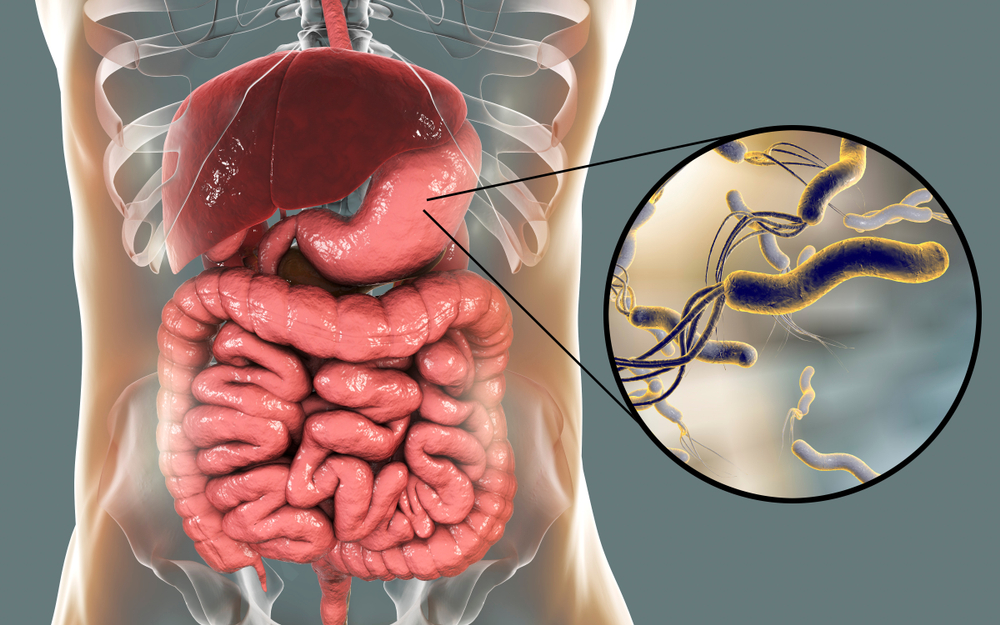
Summary
What is Helicobacter pylori
These tests are looking for evidence of an infection by Helicobacter pylori bacteria. This is known to be the main cause of stomach ulcers and peptic ulcer disease. However, not all people who are infected go on to develop symptoms.
H. pylori lives in the lining of your stomach and in the first part of the small intestine. It is the most common infection in the world and about half of Australians are thought to have it.
In most people, it lives in the stomach without causing any symptoms or problems but for others it causes inflammation that can gradually lead to ulcers and other stomach irritations. This can take many years – most people who are diagnosed with gastric ulcers are over 60. If left untreated, there is a small risk of stomach cancer.
Why get tested?
If your doctor suspects you have an H. pylori infection or ulcer, they will decide which H. pylori test is best to use in your personal situation. There are several different ways to test for an H. pylori infection.
Urea Breath Test (UBT)
This is the test most often used to diagnose an H. pylori infection because it is highly accurate and non-invasive. It measures a substance called urease in your stomach. Urease is an enzyme made by the H. pylori bacteria that allows them to survive in the acidic environment of the stomach.
The test requires you to swallow a small amount of radiolabelled urea, a mildly radioactive substance (14C urea) then after a few minutes blow into a balloon.
The urea is broken down by the bacteria’s urease into carbon dioxide and ammonia. The carbon dioxide is detectable in your breath and can show if you have H. pylori in your stomach. The urea solution given for this test is considered safe and the amount of radioactivity is about 10 – 20 times less than that used in a chest X-ray.
Stool (faecal) test
This test measures antigens in a sample of your stool or faeces. Antigens are proteins on H. pylori bacteria that trigger your body’s immune response.
Blood test
This test detects the antibodies in your blood that the immune system makes to fight off H. pylori. Antibodies take five to 10 weeks to develop after the infection first starts and they can stay in your blood long-term. However, the test cannot tell whether you have a past or current infection, and it cannot be used to monitor therapy.
Endoscopy or gastroscopy
This test involves putting a tube down your throat and into your stomach to take biopsies, which are small pieces of tissue, from the stomach lining. The tissue samples are tested in the laboratory for H. pylori. This involves a pathologist investigating your samples under a microscope. Sometimes your sample will be placed in a dish or tube containing a special medium which provides the nutrients and environment, such as the right temperature, to help any H. pylori bacteria that are present to reproduce. This allows enough bacteria to be seen and identified. A biopsy can also detect other causes of stomach pain. Sometimes a breath test can be used instead of a biopsy.
Genetic testing
This is new but is a more accurate and faster way to confirm H. pylori infection. Through measurement of the DNA and RNA in the bacterium it can also identify particular types (called strains or sub-strains) of H. pylori. This can be used to guide which antibiotics are more likely to be successful in your treatment.
Having the test
Sample
Blood.
Faeces.
Breath test: You will be asked to drink a special liquid or tablet containing a harmless radioactive material. If H. pylori is present in your gut, the material will be broken down into radio-labelled carbon dioxide gas. By testing the air you breath out, the laboratory can detect if H. pylori is in your stomach or the first part of your small intestine.
Any preparation?
None is needed for the blood test. If you are on medication such as proton pump inhibitors, certain antacids or antibiotics, you need to talk with your doctor about stopping these before the urea breath or stool test as they can interfere with the test’s ability to detect H. pylori. It is important to ask your doctor about how you should prepare.
Your results
Reading your test report
Your results will be presented along with those of your other tests on the same form. You will see separate columns or lines for each of these tests.
Questions to ask your doctor
The choice of tests your doctor makes will be based on your medical history and symptoms. It is important that you tell themeverything you think might help.
You play a central role in making sure your test results are accurate. Do everything you can to make sure the information you provide is correct and follow instructions closely.
Talk to your doctor about any medications you are taking. Find out if you need to fast or stop any particular foods or supplements. These may affect your results. Ask:
More information
Pathology and diagnostic imaging reports can be added to your My Health Record. You and your healthcare provider can now access your results whenever and wherever needed.
Get further trustworthy health information and advice from healthdirect.
What is Pathology Tests Explained?
Pathology Tests Explained (PTEx) is a not-for profit group managed by a consortium of Australasian medical and scientific organisations.
With up-to-date, evidence-based information about pathology tests it is a leading trusted source for consumers.
Information is prepared and reviewed by practising pathologists and scientists and is entirely free of any commercial influence.